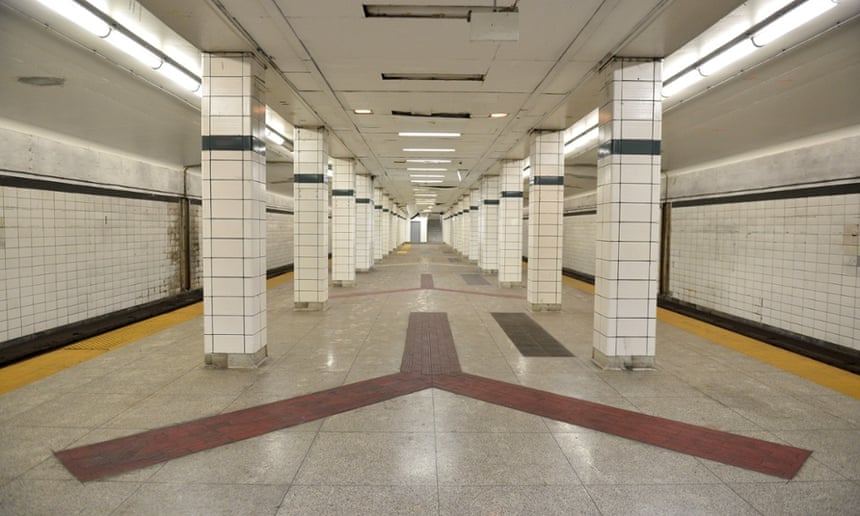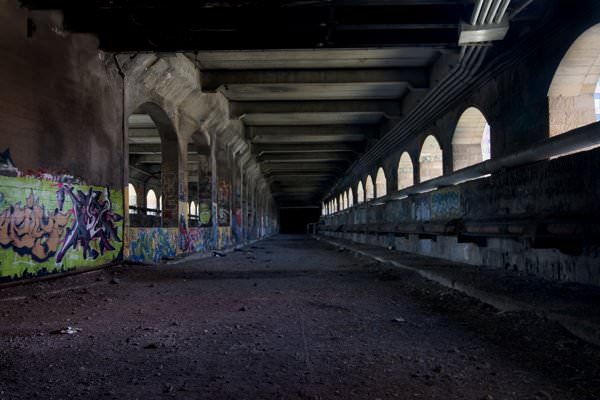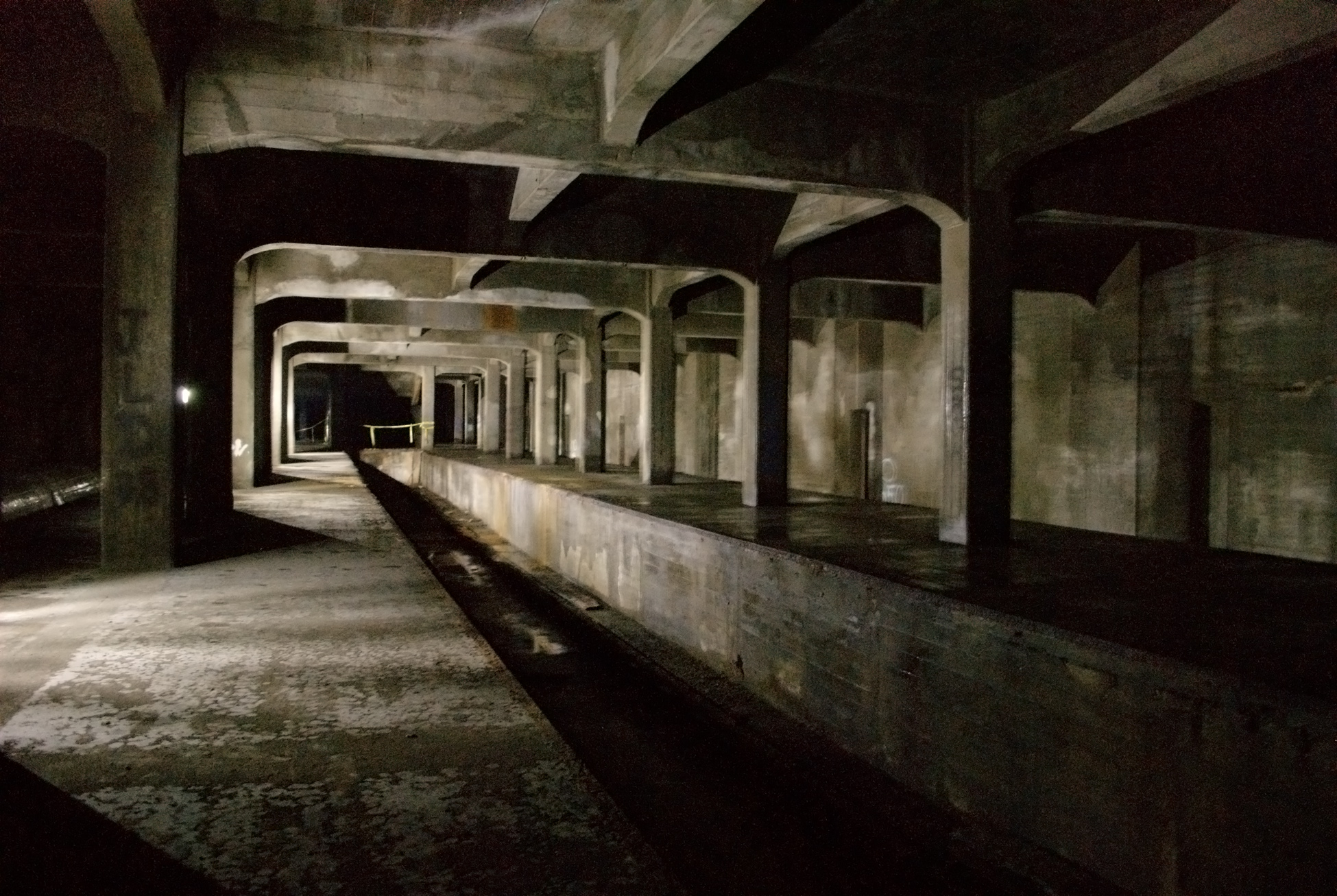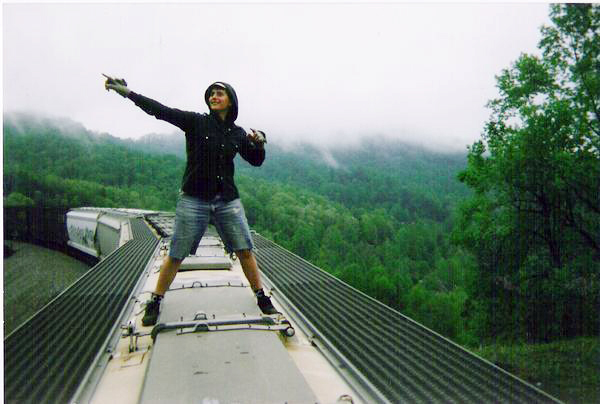http://www.theguardian.com/cities/2...ean-ghost-stations-tube-abandoned-underground

New Yorks disused City Hall subway station features ornate Guastavino tile vaulting but has lain unused since 1945. Photograph: Michael Freeman/AP

Lower Bay, a ghost station on Torontos subway system, was closed in 1966. Now it is a popular location for parties during the citys film festival. Photograph: Carlos Osorio/Toronto Star/Getty Images
More at the link, and more images here:
http://www.theguardian.com/cities/g...ned-tube-stations-bradley-garrett-in-pictures
In 1920, construction began on what was to become an important new transportation system for Cincinnati, Ohio. Local voters had given near-unanimous support to a $6m (£3.7m) municipal bond, and despite wartime restrictions and shortages, the project began. Little did the citys officials know that the system they were building would never carry a single passenger.
Five years later, the money had run out, the federal government refused to help and construction was halted. Today, there is an entire six-mile subway system abandoned underneath the Cincinnati streets.
Though Cincinnatis empty subway is an extreme example, its part of a global phenomenon thats actually quite common. Underground travel has become a familiar routine for millions of urban dwellers, but most commuters are unaware that lurking on the other side of the walls are the remains of abandoned stations, slowly deteriorating. Known as ghost stations, they are silent but powerful reminders of forgotten history.
Tom Moran, editor of the website Urban Ghosts and an expert on abandoned stations, says: For me, what makes abandoned subways more compelling than other subterranean infrastructure is the fact that they were built to cater for large crowds of people unlike sewers and utility tunnels and thus contain all the necessary features of a public space, from fire escapes to ornate signage and advertising on the walls. Its that missing human element that makes them more eerie.
In the west, many stations were abandoned due to the boom and bust cycles of capitalist markets; in former or current communist countries, ghost stations are symbols of the excesses of authoritarianism. But their histories remain local. Though no longer part of the daily lives of people, each abandoned station is firmly rooted in its citys past and may yet become part of their citys future.
If there is a global capital of ghost stations, it would have to be London, which boasts more than 40. These include North End Station on the Northern Line, which was never used following its completion in 1906, and also many other stations that were closed due to poor user numbers, notably Aldwych on the disused Piccadilly branch line. Urban explorer Bradley Garrett made headlines in 2012 when he was arrested by London transport police for exploring the station. He received a conditional discharge.
Londons transport authority is now planning to sell off some of the disused stations to companies who have plans to turn them into tourist attractions, hotels, shops and museums, according to a report. One estimate places the abandoned networks value at £3.6bn.
Tom Morans favourite London ghost station is in fact an abandoned lift passageway at the much-used Notting Hill Gate tube station. When it was discovered during construction work several years ago, workers found vintage posters that had effectively been cocooned there since the lift shafts were sealed off in the 1950s, he says. You could argue that its not the most compelling find ever, but for me it symbolises the very essence of the tubes forgotten corners, where relics from other eras live on.
Apart from London, perhaps the best-known city in western Europe for ghost stations is Paris. Several were closed during the second world war, while others, such as Haxo and Porte Molitor, were built during the rapid expansion of the Paris Métro in the 1920s but never opened. Another concentration of ghost stations can be found in Barcelona, whose Banco station is reputed to have been designed, not for the public, but as a secret delivery system to the Bank of Spain. Gaudi station, named after Spains celebrated architect and intended to serve the Sagrada Familia cathedral, was similarly never opened. Today it is known for numerous reports of ghost sightings.
Across the Atlantic, the subways of the US faced a formidable foe: the freeway. As car use skyrocketed after the war, subway systems became less popular, and underground stations began to close down. In denser eastern US cities, most rapid transit systems survived, but individual stations were closed, such as Franklin Square in Philadelphia. Yet, not all eastern systems survived: Rochesters subway was completely closed, like Cincinnatis. In Chicago, parts of the elevated train network were abandoned due to lack of maintenance funds. But the biggest casualties were on the west coast. San Franciscos underground Eureka station was closed permanently, as was the underground hub of Los Angeless Red Car system.

New Yorks disused City Hall subway station features ornate Guastavino tile vaulting but has lain unused since 1945. Photograph: Michael Freeman/AP

Lower Bay, a ghost station on Torontos subway system, was closed in 1966. Now it is a popular location for parties during the citys film festival. Photograph: Carlos Osorio/Toronto Star/Getty Images
More at the link, and more images here:
http://www.theguardian.com/cities/g...ned-tube-stations-bradley-garrett-in-pictures









